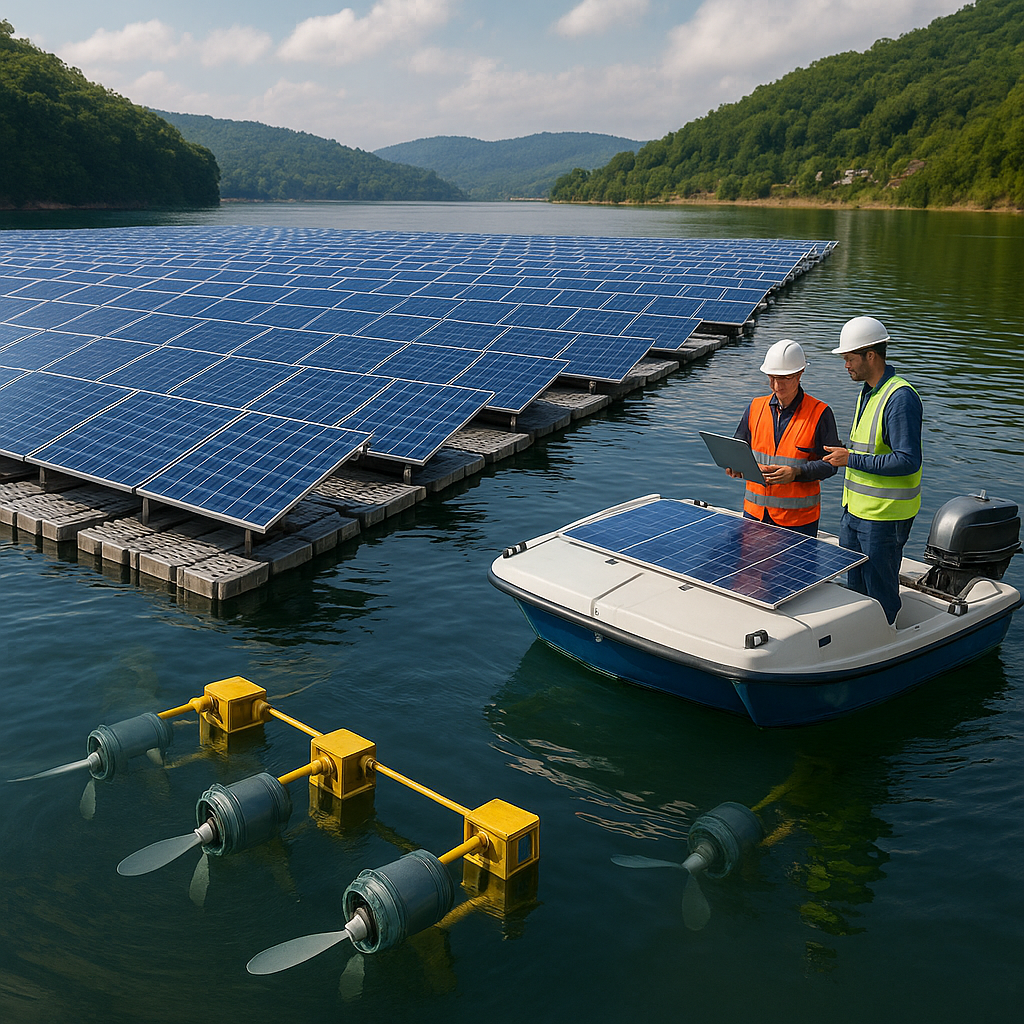As the world shifts to cleaner and smarter energy sources, engineers and scientists now use nature in fresh ways. Floating solar farms and hydrokinetic turbines stand out as two of the most thrilling breakthroughs in renewable energy. These technologies allow us to generate power from the sun and flowing water without eating up land or constructing massive dams.
Let’s explore what they are how they operate, and why they matter.
☀️ What Are Floating Solar Farms?
Floating solar farms consist of solar panels placed on water instead of land. They rest on lakes, reservoirs, or ponds and convert sunlight to electricity just like standard solar panels.
✅ Why Use Floating Panels?
- No land required – frees up space to farm or build
- Cooler water temperatures boost panel performance
- Cuts down on water loss by covering the surface and reducing evaporation
These are proving effective in countries like India, Japan, and China where land is scarce and energy needs are on the rise.
🛠️ What’s the Setup for Floating Solar Farms?
Floating solar systems include:
- Solar panels to capture sunlight
- Platforms made of plastic or metal to keep them buoyant
- Anchors to hold everything in place
- Cables and inverters to transmit electricity to shore
These systems have safety features, work well, and don’t harm the environment — and they can operate as long as systems on land.
🌊 What Are Hydrokinetic Turbines?
Hydrokinetic turbines generate electricity by harnessing moving water — such as river currents, tides, or ocean waves. They function to wind turbines, but they’re placed underwater and rotate with the water’s flow.
✅ Why Hydrokinetic Turbines Are Great
- You don’t need dams or big structures
- They run non-stop – even without sunlight or wind
- They fit in isolated or off-grid spots near rivers or coastlines
This makes them a great option for communities that require constant power but have limited access to regular electricity.
How Do Hydrokinetic Turbines Work?
These turbines are installed:
- In flowing water – rivers, canals, or tidal areas
- On the riverbed or ocean floor sometimes secured with ropes
- Connected to energy grids through underwater cables
Water moves through the turbine blades creating motion. This motion is converted to electricity using a generator — all without noise or pollution.
Benefits of These Green Energy Sources
Eco-Friendly
- They don’t damage the land or require cutting down forests
- Have little effect on water creatures when set up
💡 Productive and Dependable
- Floating solar receives more sunlight because of less dust
- Water turbines create energy around the clock
📦 Clever Use of Space
- Ideal for nations with scarce land
- Can be placed in reservoirs, dams, or near shores
🌐 Real Cases in Action
- 🇮🇳 India’s Ramagundam Floating Solar Plant – gives power to thousands of homes
- 🇯🇵 Japan’s Yamakura Dam Project – ranks as one of the world’s largest floating solar systems
- 🇺🇸 Alaska’s RivGen® Project – employs a hydrokinetic system to power remote villages
These projects show that clean energy can be both creative and useful.
🔮 What’s Coming Next?
As green energy demand grows, you can expect to see:
- Ocean-based floating solar farms
- Smarter, AI-controlled water turbines
- Combo systems where solar and water power work together
These breakthroughs have an impact on making green power cheaper easier to get, and more dependable than at any time in the past.
